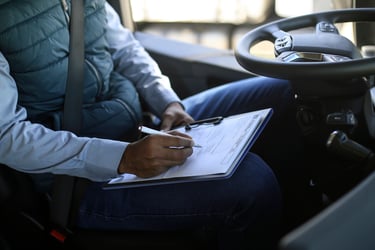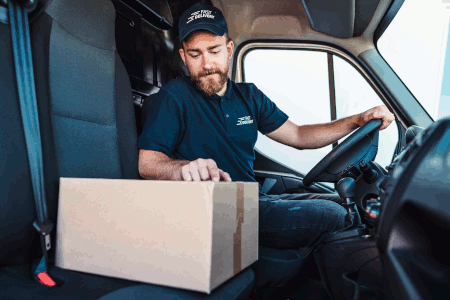Related Posts



You are about to leave Risk Strategies website and view the content of an external website.
You are leaving risk-strategies.com
By accessing this link, you will be leaving Risk Strategies website and entering a website hosted by another party. Please be advised that you will no longer be subject to, or under the protection of, the privacy and security policies of Risk Strategies website. We encourage you to read and evaluate the privacy and security policies of the site you are entering, which may be different than those of Risk Strategies.


In an effort to improve safety in its delivery network, Amazon recently announced a plan to begin placing Netradyne’s AI-enabled cameras in the delivery vehicles of its contracted Delivery Service Partners (DSPs) across the country.
The cameras will monitor and record drivers 100% of the time when on their route, reporting back to Amazon. And in addition to recording and cataloging the data, it will provide real-time audible alerts to the driver for a series of safety infractions, including hard braking, failure to stop and speeding.
While some DSPs and privacy advocates are concerned about “Big Brother” style privacy tradeoffs, the reality is that this kind of technology is by no means new to the industry. Telematics and other monitoring systems have been on the rise to help manage fleets more effectively, cut down on overall costs and increase safety for both delivery drivers and pedestrians.
With Amazon seen as a trailblazer, it’s just a matter of time before the entire industry follows suit. So, what could this mean for the insurance sector?
Insurance Implications
The commercial auto insurance industry for transportation is experiencing the hardest market there’s ever been. A long list of transportation auto insurers have posted loss ratios exceeding 100% year-over-year for the past decade – resulting in more carriers leaving the space than entering.
These losses are caused by a combination of factors, including rising vehicle prices plus technology-distracted drivers along with more people on the road than ever before – equating to more, pricier accidents and increased litigation.
However, technology companies see this as an opportunity, with organizations like Netradyne entering the space to create safety mechanisms for vehicles that result in better fleet management and lower costs/losses in the end.
In time, with industry-wide implementation of similar safety technology, transportation companies can leverage this data to show improved driver performance, fewer accidents and reduced losses for insurers. This could result in improved insurance rates, lower premiums, broader coverage and a softer market for the industry. As we like to say, the proof is in the pudding. Demonstrating the improved performance results that track with the data will go a long way with underwriters.
Additionally, it’s important to not only implement new solutions, but use them to their maximum potential. While adding cameras could ensure drivers think twice before running a red light, using the video footage and data to create consistent and effective safety training programs for your drivers will have the greatest effect.
Doing this will help develop a real, lasting change in safety culture for your company and the industry that saves both money and lives.
Want to learn more?
Find me on LinkedIn, here.
Connect with the Risk Strategies Transportation team at transportation@risk‐strategies.com.
Email me directly at bpaulozzi@risk‐strategies.com.
The contents of this article are for general informational purposes only and Risk Strategies Company makes no representation or warranty of any kind, express or implied, regarding the accuracy or completeness of any information contained herein. Any recommendations contained herein are intended to provide insight based on currently available information for consideration and should be vetted against applicable legal and business needs before application to a specific client.


